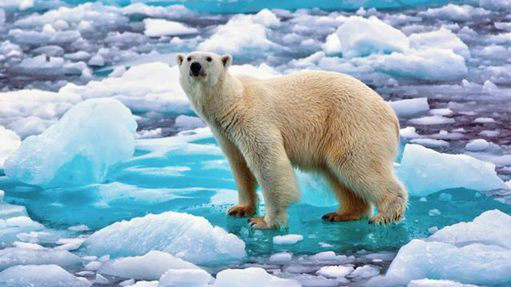全球变暖!北极熊捕食越发艰难

Polar Bears spend most of their time on the sea ice in search of seals. And seals spend most of their time under that ice, avoiding the top predator. But climate change is giving polar bears additional challenges in their searches for food.
“Sea ice is now drifting(漂流) faster,” said George Durner. He and his colleagues compared sea ice conditions from 1987 to 1998 with those from 1999 to 2013. “And what we found was that ice drift at the locations used by polar bears increased 30% in the Beaufort sea and 37% in the Chukchi sea.” That’s a problem because polar bears are homebodies—they prefer to stay in a specific range. “Throughout their range, they seem to have a sense of place. And here we have a situation where the general pattern of ice drift is westward, so to remain in your traditional range, it means you have to constantly be walking eastward to compensate(抵消) for that westward drift.”
The result is a large-scale polar bear treadmill. And all that walking requires extra fuel. On average, a single bear eats between 31 and 33 seals per year. But the metabolic consequence of the treadmill effect means they have to eat on average one to three more. The study is in the journal Global Change Biology. And not only is the ice drifting faster, it’s also melting more, giving the bears less of the platform they use to pursue their prey(猎物). So they need more seals but have a tougher time to track them. All put polar bears on a slippery slope.
本时文内容由奇速英语国际教育研究院原创编写,未经书面授权,禁止复制和任何商业用途,版权所有,侵权必究!(投稿及合作联系:028-84400718 QQ:757722345)
1. The underlined word “predator” means ______ in Chinese. (词义猜测)
A 人类
B 捕食者
C 猎人
D 机器

